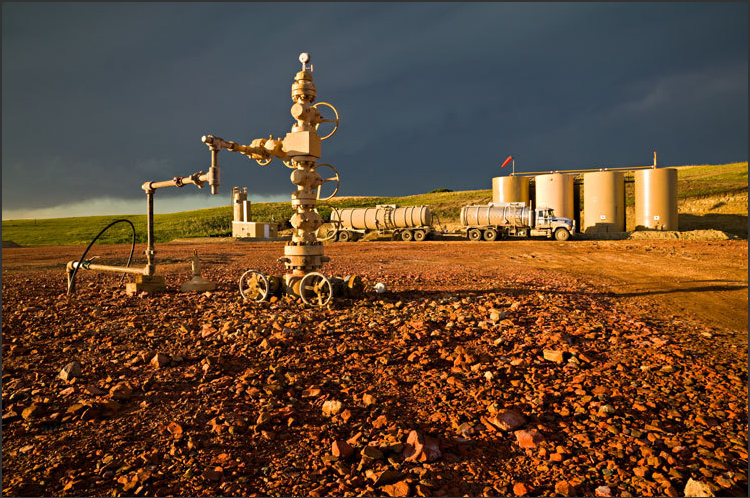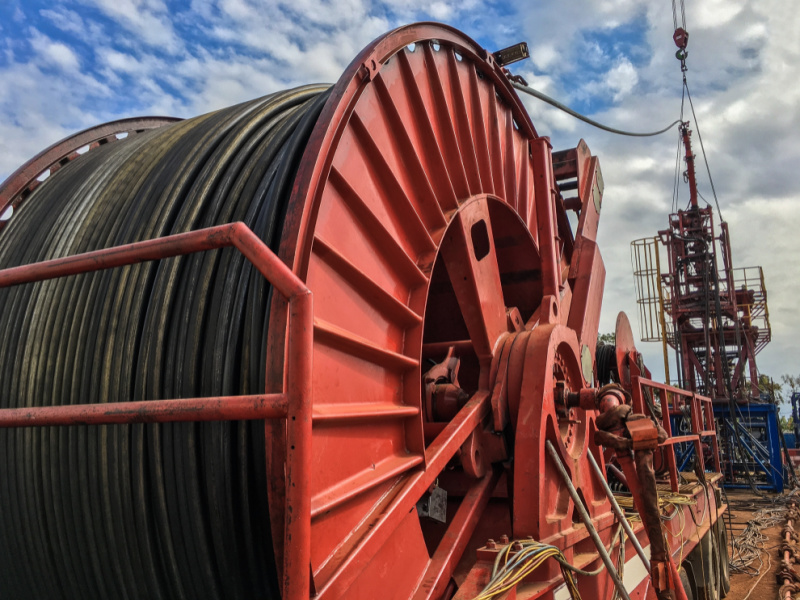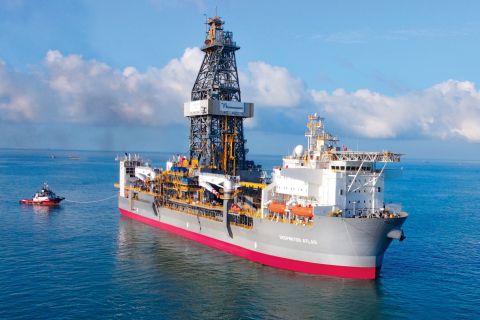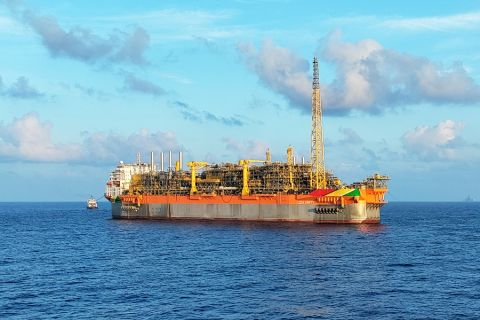Presented by:

Editor's note: This article appears in the E&P newsletter. Subscribe here.
The strength of the oil and gas sector lies in the health of its mature fields, and experts say there are opportunities to squeeze more oil and profits from these assets.
The tasks may be considered daunting as these fields, which have produced most of their reserves, run into various challenges such as corrosion, clogs and debris, high water cut, sand or wax along with old infrastructure or simply put just about anything that results in downtime.
“There’s the excitement that us techies get from being able to resolve complex problems with new technology,” Ayo Ofi, production optimization discipline lead with Baker Hughes’ oilfield services, told Hart Energy's E&P.
Added to technical and operational challenges are economic obstacles associated with the lingering pandemic and associated side effects, commodity price volatility, and capex and opex pressure. This comes amid focus on reducing emissions and embracing renewable energy.
Still, the need for oil and gas continues with further growth anticipated from developing countries.
Until other energy sources rise to meet higher demand, oil and gas production from mature fields will be needed, according to Aparna Raman, reservoir performance president with Schlumberger.
“Today you see generally a decline rate of about 6%,” Raman told E&P. “But at the same time, if you look at any of the industry research, by about 2025, 80% of our production globally is expected to come from mature fields.”
Plus, as Rob Hull, senior regional manager for P&A and sustainable resources with Halliburton, pointed out, “There’s no better place to find oil [than] where you already have it. … Imagine being able to take latest and greatest technology and imaging and so forth and rerun them into some of these older type wells to see if you have anything that you might have missed.”

Existing infrastructure significantly lowers the cost to entry and communication technologies such as modem technology and subsea boosting make mature fields attractive, added Alistair Mykura, senior product manager with Baker Hughes' oilfield equipment.
“In the COVID-era that we live in, justifying a business case for mature expansion versus a multibillion-dollar EPCI project is a lot easier to make to investors,” he said.
While the predictability of these assets also boosts confidence, experts agree that knowing the assets well and being able to pinpoint the cause of problems are key to unlocking continued revenue streams. For some older wells that have reached the end of their oil-producing days, there may even be life after death.
Tapping into technology
EOR, artificial lift and infill drilling are among the common techniques used to boost production from mature fields. Nowadays, proven technologies and techniques are being improved as emerging technologies take root.
Schlumberger is focused on well interventions. About 35% of interventions, considered high risk because they are usually performed indiscriminately in problem wells, don’t achieve the outcome desired, Raman said.
“We would all be out of business if the drilling industry had those type of statistics,” failing to land wells in the right place, she said.
Mature field subsurface maintenance has also suffered from a lack of investment, perhaps deterred by how easy it is to drill a new well.
“A lot of the intervention technologies have not advanced in the industry like drilling technologies have,” Raman said, noting nearly all of the industry’s intervention work is reactive instead of proactive. “Intervention in some ways is stuck in the dark ages.”
However, the company is working to change that by rolling out new technologies. These include its recently launched Optiq Schlumberger fiber-optic solutions that use fiber-optic strands as sensors for multidomain measurements in a fraction of the time compared with traditional methods.
“This is going to be yet another game changer for many applications, specifically for intervention and well work because we have embedded fiber optics in our wireline conveyances so you can now acquire distributed fiber-optic measurements combined with every wireline measurement,” she said.
“Our Optiq solutions can also be deployed using fiber optics that are permanently installed behind casing or clamped to tubing,” Raman continued. “So instead of just having a pinpoint measurement of a particular tool measure point, you are basically having measurements across the entire wellbore. Whether it’s leak detection, stimulation monitoring or production profiling, it allows you to have a very healthy surveillance program and keep updating your reservoir model.”
In many cases, proactive well intervention is the low-hanging fruit capable of producing more from mature fields with reduced costs and low environmental impact. Compared to drilling new wells and installing new infrastructure, these efforts—with the help of surveillance and monitoring—have favorable economics and are low risk, according to Raman.
Schlumberger’s intervention strategy for mature fields is focused on reducing costs, risk management and proactive reservoir management. Keys are integrated solutions that provide a one-stop shop from diagnosis to outcome, equipping lighter interventions to carry out some tasks once handled by heavy interventions to save costs and shrink footprints, and incorporating digital to create smart technology.
Diving deeper with digital
Considered “old” and “basic,” coiled tubing (CT) technology—a necessity for most mature fields—is getting smarter with the addition of fiber optics and power, Raman said. Advances in wireline intervention capabilities is enabling service providers to go to deeper depths and for mechanical interventions, eliminating in some instances the need for a workover rig.

“You’re able to shift sleeves or mill debris or do mechanical activities, which again, in the past would require coiled tubing or a rig,” Raman said. “The theme here is lighter interventions are becoming more capable, so you don’t need the heavier intervention as much.”
Plus, she continued, CT is now intelligent.
“In the past, you might need to do a production surveillance, understand which zones are contributing, design a stimulation, do the stimulation treatment and then understand if your stimulation treatment was successful and what your post-stimulation production was,” Raman said. “That would require three or four different types of runs with slickline, with wireline and with coiled tubing. Today you can do it in one trip, so it comes back to going lighter.”
Improving communication power with modem technology in mature fields is an area of focus for Baker Hughes. It’s easy to disrupt communication signals in existing umbilicals, and challenges arise when there are no spare lines or it is not feasible to run a spare umbilical, Mykura said.
However, concurrent communication systems can be installed. These include “time division multiplexing systems, which effectively allows systems to take turns to use available bandwidth to communicate” and “frequency division multiplexing, which enables two systems to use different frequency bands to communicate at the same time,” he said.
The technologies require the right modem to communicate at the same time as others in the system, he said, noting this involves lots of filtering topside to separate the communication signals. “We’ve been investing, and we continue to invest very heavily in our modem technology to enable that capability,” Mykura said.
The industry, he said, is seeing an uptick in these technologies.
Data analytics is also showing great promise for diagnostics and surveillance, Ofi said before briefly turning to solutions for other common challenges in mature wells. Baker Hughes said its AquaCUT relative permeability modifier, for example, is capable of decreasing water cut in mature sandstone wells and reducing associated processing.
“We also have sand consolidation treatments, which abate sand production issues without having to do any extensive completion downhole with sand treatments,” he said. “We’re able to produce at higher flow rates. Again, that tips the economic scales with you lifting more with the same amount of cost.”
Less expensive semi-intelligent completions also have proven effective in managing water breakthrough, a common challenge for mature fields, Raman added. She noted inflow control devices can be operated through intervention toolkits along with surveillance data, allowing for proactive well management.
Given the focus today on emissions, monitoring and controlling discharges and releases from mature fields will be crucial, Hull added. Some of Halliburton’s newest technologies and workflows take aim at the challenge. These include a patented workflow that measures emissions before and after P&A called WellAssure.
Much of the work is focused on automation and controls along with artificial intelligence (AI) and digital twins for production surveillance, Hull said. He added SCADA is also being used to better control fields.
“Nowadays the price point is down to where it’s very affordable to do it on each well,” he said of SCADA and AI.
However, Raman added, “A lot of challenges around mature fields, production management and intervention work are not necessarily technical.”
It could involve accounting methods, contract structure and the willingness of each party to share information to find the most efficient solution, she said.
“It takes a willingness for us as an industry to say that this is a problem we need to tackle now. We can’t just keep drilling,” Raman said. “Yes, of course, we can keep drilling new wells and new fields, but we need to take care of the mature assets that we have. There is a lot of potential in those mature assets.”
Strategy for winning economics
It all comes down to execution, according to Baker Hughes’ Ofi.
“We’re always looking for fit-for-purpose, cost-effective solutions,” he said. “Understanding the challenges, knowing the hydrocarbons that remain and what we’re going after is usually critical to ensuring that we come up with the right solutions that meet the economic and technical requirements of the project.”
The toolkit can contain myriad solutions. However, failure on the execution front could be catastrophic.
“The best way to tackle the problem is to get to the root cause, so you’re dealing with the problem, not just the symptoms,” Ofi said. “For that, you need a good understanding of the performance of the field” to find problem areas to better guide companies to solutions.
However, what drives the chosen technique and deployed technology are answers, he said, to questions such as “How much do we have left to produce? What are we going after?”
In the past, customers would request quotes and emerge with tenders for specific technologies, products or services; however, now they ask for solutions to their challenges, Ofi said, noting this requires an integration of offerings.
RELATED: Baker Hughes New Approach Connects Entire Subsea Development Process
Understanding risks and reliability are also crucial, Mykura added, noting the importance of exceeding expectations. Building relationships with customers has proven beneficial.
“You start to understand the problem,” Mykura said. “You understand from their perspective.”
Looking at the business case for mature fields, it’s about getting costs lower, optimization backed with analysis, maximizing upside and minimizing the time it takes to get a return on investment (ROI), Mykura said. Getting equipment and technology online in mature fields faster bolsters the business case, enabling quicker returns on investment.
Technologies rolled out in greenfields may grab headlines, Mykura said, but “we try to flow the technology into the smaller, what some people might see as, less exciting projects. We try to pollinate with the same rigor [and] the same sort of innovation.”
Moreover, some of these technologies can be used in renewables.
“When you think about oilfield services and transferable technology into geothermal, energy storage, hydrogen storage and then you think about the flow control that oilfield [service] provides and the TPS [turbomachinery and process solutions] angle with all the compression that’s required for pumping, compressing and storing hydrogen, carbon dioxide or even natural gas,” Ofi said, “it’s the right mix.”
Alliances add to efficiencies and system reliability, he continued.
Going beyond oil, gas
Regardless of the technology tapped, managing mature fields comes down to economics. When a mature field seizes to be economic, that’s the time for P&A and removal from the portfolio, according to Halliburton’s Hull. The same can be said for technology investment.
Thinking about putting the latest, greatest technology on a marginal well?
“Unless it’s giving you a better return on investment, or ROI, there’s no reason to apply that technology,” Hull said. “You’re just prolonging the inevitable. That’s just the characteristic of a mature field. Every mature field, every well, will eventually die, and that death is usually driven by economic limit.”
When that time comes, abandoning a large portfolio of mature wells at once—instead of one or two at a time—is the most cost-effective route, according to Hull.
Unlike exploration and drilling, which typically comes from capex budgets, mature field-related costs are from the opex side. Many operators don’t have the luxury of making massive cuts here because of the mature fields’ production tie to the revenue stream.
When it is no longer economic to produce hydrocarbons from a mature well, its life might not necessarily be over. Some mature wells are candidates for enhanced geothermal energy systems. Halliburton is involved with several groups developing pilot projects that involve retrofitting mature wells to produce geothermal energy.
“It’s all about the completion,” Hull said. “You may end up having to go in and recomplete that well and do a workover on it just to make sure that it can handle the enhanced geothermal application.”
Referring to a 2019 report by GeoVision on harnessing geothermal energy, Hull said thousands of wells could meet the requirements for geothermal energy.

“A lot of those wells are strictly verticals,” he said. “So you could see all of these vertical mature field wells be retrofitted for enhanced geothermal.”
Old wells could also be used for carbon capture, utilization and storage, though there may be more criteria to meet, Hull added.
Nonetheless, he expects to see a wave of mature assets being repurposed—especially in the U.S.—as the sustainability movement strengthens. That would also bode well for the oil and gas workforce with transferable skills.
“It’s really a good time for mature fields in the United States,” Hull said. “I think you’re going to see some really cool stuff coming that is going to change the landscape of how mature fields are viewed and especially nowadays with technology and with repurposing.”
Recommended Reading
Rystad: More Deepwater Wells to be Drilled in 2024
2024-02-29 - Upstream majors dive into deeper and frontier waters while exploration budgets for 2024 remain flat.
TotalEnergies Starts Production at Akpo West Offshore Nigeria
2024-02-07 - Subsea tieback expected to add 14,000 bbl/d of condensate by mid-year, and up to 4 MMcm/d of gas by 2028.
Proven Volumes at Aramco’s Jafurah Field Jump on New Booking Approach
2024-02-27 - Aramco’s addition of 15 Tcf of gas and 2 Bbbl of condensate brings Jafurah’s proven reserves up to 229 Tcf of gas and 75 Bbbl of condensate.
Exxon Mobil Green-lights $12.7B Whiptail Project Offshore Guyana
2024-04-12 - Exxon Mobil’s sixth development in the Stabroek Block will add 250,000 bbl/d capacity when it starts production in 2027.
The Need for Speed in Oil, Gas Operations
2024-03-22 - NobleAI uses “science-based AI” to improve operator decision making and speed up oil and gas developments.






